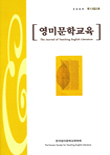학술논문
『이사벨라; 혹은, 바질 화분』과 라파엘전파 회화
이용수 240
- 영문명
- Isabella; or, The Pot of Basil and Pre-Raphaelite Paintings
- 발행기관
- 한국영미문학교육학회
- 저자명
- 손영희(Younghee Son)
- 간행물 정보
- 『영미문학교육』영미문학교육 제17집 2호, 43~72쪽, 전체 29쪽
- 주제분류
- 어문학 > 영어와문학
- 파일형태
- 발행일자
- 2013.12.30
6,280원
구매일시로부터 72시간 이내에 다운로드 가능합니다.
이 학술논문 정보는 (주)교보문고와 각 발행기관 사이에 저작물 이용 계약이 체결된 것으로, 교보문고를 통해 제공되고 있습니다.

국문 초록
영문 초록
This essay explores the major themes of John Keats's Isabella; or, The Pot of Basil and cultural changes in Victorian era revealed in Pre-Raphaelite paintings, John Everett Millais's Lorenzo and Isabella and William Holman Hunt's Isabella and The Pot of Basil.
John Ruskin's aesthetic democratization inspired the first-generation Pre- Raphaelite artists with the idea of social reform and moral edification of the masses through art. However, aesthetic democratization, censured by conservatives for lowering the standards of art, was controversial from the beginning since it wanted to dole out art to working class who lacked the leisure and means to enjoy it. The second generation Pre-Raphaelite artists turned away from aesthetic democratization and catered to the demands of affluent bourgeois clients.
Pre-Raphaelite painters identified with and worshipped Keats who, they thought, sought to improve himself through self-education and craved for fame. The image of Keats as a defiant, precocious genius fighting for the autonomy of art was constructed from a series of Keats's biographies published in the Victorian era. While Keats's poetry embodies the spirit of Revolution, it is also rich in sensual imagery with frequent allusions to Greek mythology and medieval literature, which is one reason why the second generation Pre-Raphaelites preferred Keats's poetry to Wordsworth's for their subject matters.
Keats's Isabella; or, The Pot of Basil, based on the story from Giovanni Boccaccio's Decameron, is not limited to the convention of romance genre as it encompasses the themes of class conflicts, greedy capitalists, and British middle-class women confined at home. Despite the fact that Isabella; or, The Pot of Basil was not positively received because of its alleged mawkishness, it was one of the most popular poems among Pre-Raphaelites along with The Eve of St. Agnes. The first generation Pre-Raphaelites who advocated aesthetic democratization focused on class conflicts, attacking avaricious industrialists. Millais's Lorenzo and Isabella, which underscored the conflicts between Lorenzo and Isabella's brothers, is representative of the period. The second generation Pre-Raphaelites were more interested in Isabella's grotesque love for Lorenzo, whose head is buried in the pot of basil. Keats emphasized Isabella's abnormal psychology after her sexual desire and maternity are frustrated. However, most of the second generation Pre-Raphaelite paintings, including Hunt's Isabella and The Pot of Basil, ignored Keats's intention and portrayed Isabella as a luxurious decoration for bourgeois home, thereby making her the object of sexual desire for bourgeois male clients.
목차
Ⅰ. 키츠와 라파엘전파 회화
Ⅱ. 로렌조와 자본주의: 밀레이의 <로렌조와 이사벨라>
Ⅲ. 이사벨라와 바질 화분: 헌트의 <이사벨라와 바질 화분>
인용문헌
Abstract
키워드
해당간행물 수록 논문
참고문헌
관련논문
어문학 > 영어와문학분야 BEST
더보기어문학 > 영어와문학분야 NEW
- EFL Students’ Perceptions of ChatGPT Feedback in IELTS Opinion Essays
- 영화 활용을 통한 제2언어 학습에서 맥락의 역할에 대한 연구: 원어민과 유사한 선택과 형태-의미 짝짓기를 기준으로
- 영화 기반 멀티미디어 수업을 통한 EFL 여대생들의 어휘력과 자아 이미지 향상 연구: 영화 아이 필 프리티를 중심으로
최근 이용한 논문
교보eBook 첫 방문을 환영 합니다!

신규가입 혜택 지급이 완료 되었습니다.
바로 사용 가능한 교보e캐시 1,000원 (유효기간 7일)
지금 바로 교보eBook의 다양한 콘텐츠를 이용해 보세요!



